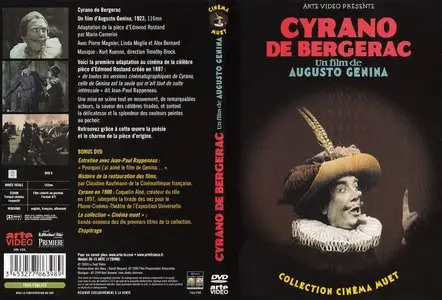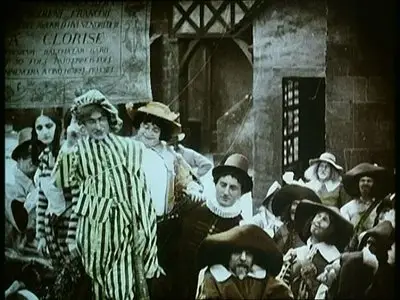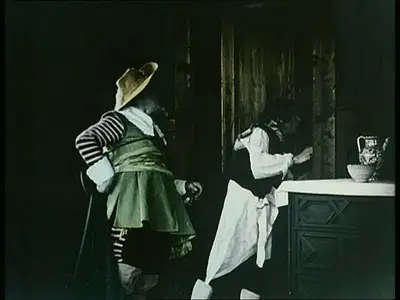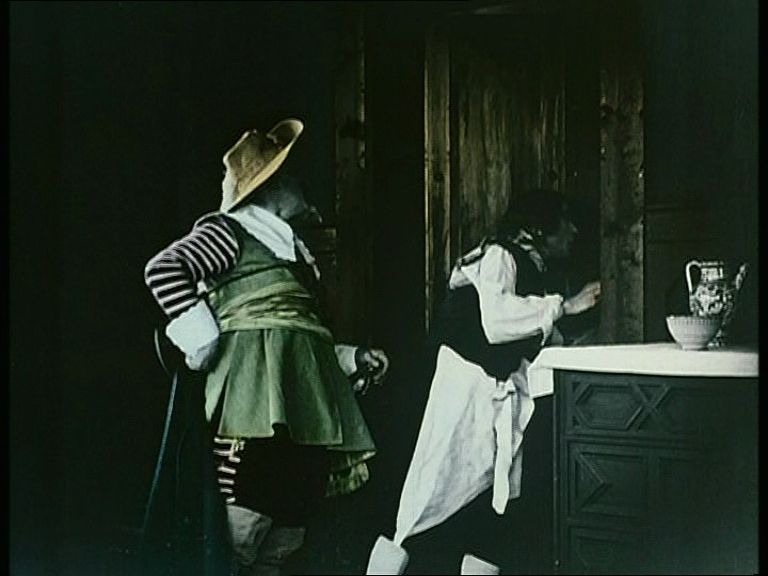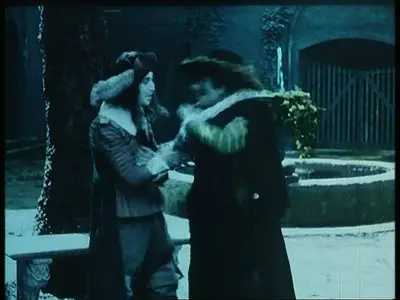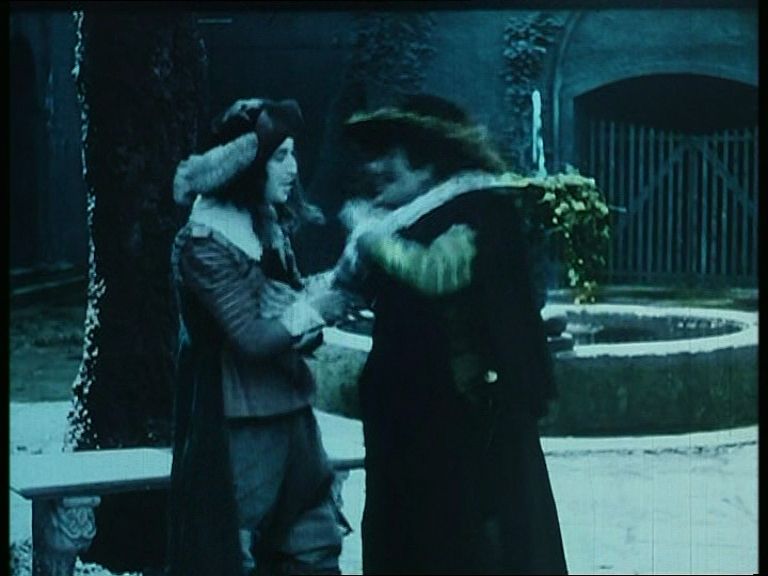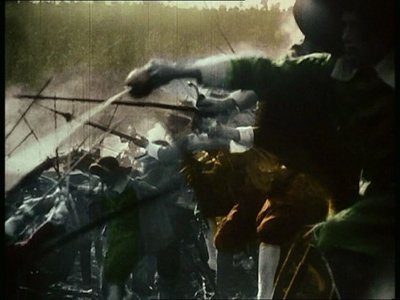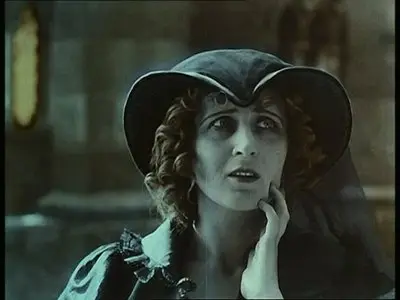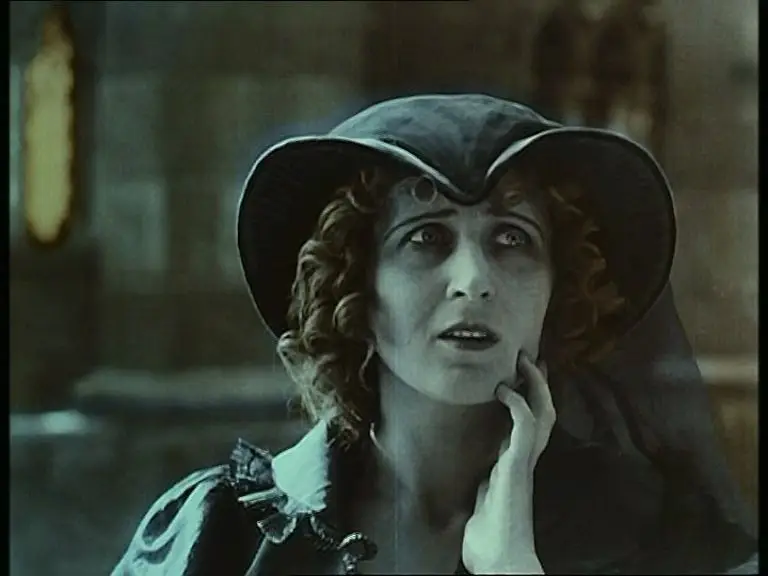Cyrano de Bergerac (1923)
DVD9 | VIDEO_TS | PAL | 4:3 | 4:3 | 720x576 | 6900 kbps | 8.0Gb
Audio: English AC3 2.0 @ 192 Kbps Soundtrack | Subtitles: French Intertitles with optional English and German subtitles
01:53:00 | Italy, France | Drama, Romance, War
DVD9 | VIDEO_TS | PAL | 4:3 | 4:3 | 720x576 | 6900 kbps | 8.0Gb
Audio: English AC3 2.0 @ 192 Kbps Soundtrack | Subtitles: French Intertitles with optional English and German subtitles
01:53:00 | Italy, France | Drama, Romance, War
Cyrano de Begerac is joyous, witty, a poet, a leader and filled with plenty of charisma and bravado in 17th Century France. He has only one flaw: an unusually long nose which makes him unattractive to any woman. Thus, he cannot have the woman he loves, his cousin Roxanne. Roxanne loves an officer in his army who gets tongue-tied in front of women. Who will Roxanne love? Will Cyrano ever find love? Or will he find happiness in helping the officer woo Roxanne?
Director: Augusto Genina
Cast: Pierre Magnier, Linda Moglia, Angelo Ferrari, Maurice Schutz, Alessandro Bernard, Umberto Casilini, Gemma De Sanctis, Roberto Parisini
Made in 1923, Cyrano de Bergerac was the first film version of French dramatist Edmond Rostand's timeless tragedy of the beautiful Roxanne (Linda Moglia) and the man who loves her anonymously - an expert swordsman more famous for his ugliness, which is accented by an enormous nose.
Cyrano de Bergerac was an Italian and French collaboration produced by the Unione Cinematographica Italia and released by the French-based Pathe studio. The film is set during the reign of Louis XIII in 1640 Paris and features the great Romantic hero, Cyrano de Bergerac (Pierre Magnier), as a valiant, brilliant and much admired Gascon guard who's as well known for his skillful swordplay as for his rapier wit. In one of the film's most engaging, visually stylish scenes, Cyrano is introduced from behind as an anonymous figure entering a Paris theater, the feather on his cap bobbing through the crowd. At the theater Cyrano first establishes his inventive, combative charm by engaging an attendant nobleman in a show of wits that leaves the audience in stitches.
When Roxanne falls in love with the handsome new Gascon recruit, Christian (Angelo Ferrari), Cyrano is heartbroken. But he does everything he can to protect the boy and welcome him into the Gascon guard.
One of the most moving heroes in the history of stage and screen, Cyrano is a gallant, self-sacrificing man who jeopardizes even his own happiness so that the Roxanne he adores can find true love. As part of that mission, Cyrano writes gloriously romantic letters to Roxanne on Christian's behalf. The gesture only further endears Roxanne to the good-looking but vacuous Christian. While Christian and Cyrano are at the front fighting the Spanish, Roxanne is so moved by Christian's letters she rushes to the battlefield to reunite with the man she believes wrote those letters, with tragic results.
Directed by acclaimed Italian director Augusto Genina (who went on to direct silent icon Louise Brooks in her last major film Prix de Beaute, 1930), this adaptation of Rostand's classic drama is an impressive epic in the annals of early film production, complete with a fabulously recreated historical setting, exquisite costumes, impressive performances and a story whose essential power has not diminished over time.
Cyrano de Bergerac was believed to have been lost until its fortunate rediscovery and restoration in 1996. The film's re-release was greeted enthusiastically by the film community, largely because of the innovative visual look of the film. Shot in one of the first hand-painted color processes, Pathecolor, Cyrano is one of the few surviving examples of this visually stunning, lyrical technique which required three years of meticulous work applying tinting, toning, stencil coloring and hand-painting to each individual frame. Pathecolor was considered a great success, because unlike other color processes, it did not need special equipment for projection. A New York Sun critic rhapsodized about the use of Pathecolor in Cyrano, "The characters appear in eye-smashing creations, consisting of purple trousers, pink shirts and green capes, or blue gowns, yellow hats and indigo hose. [The result] has all the artistic effectiveness of a succession of penny postal cards!"
But that wondrous cinematography is just one aspect of a captivating film also distinguished by Pierre Magnier's touching performance, which profoundly conveys the divinity of Cyrano's soul and the tortures of his frustrated love.
Rostand's eternally moving play of a noble man's desire for love has since been adapted in numerous film versions: a 1950 film which won Jose Ferrer an Academy Award for Best Actor, Steve Martin's comically updated version Roxanne (1987) with Daryl Hannah as the unattainable beauty and a 1990 French production directed by Jean-Paul Rappeneau and starring Gerard Depardieu, which was a critical favorite.
Extras:
- Alternative English, French & German menus
- Interview with Jean-Paul Rappeneau (8 min., in French with optional English and German subtitles)
- Cyrano in 1900: Coquelin Aîné Plays Cyrano (3 min., in French with optional English and German subtitles)
- The Process of Restoring Film (5 min., in French with optional English and German subtitles)
- The Silent Era Collection (9 min., Silent)
IMDb


